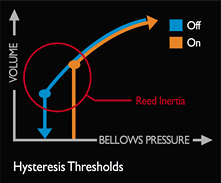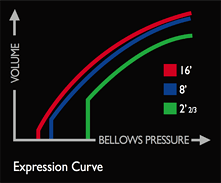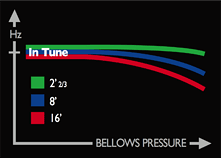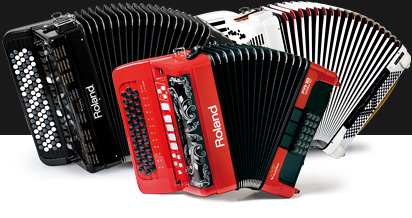Technology
Physical Behavior Modeling
At the heart of the V-Accordion is Roland’s proprietary Physical Behavior Modeling (PBM) digital sound engine. PBM uses complex algorithms to accurately recreate an acoustic accordion’s sound characteristics. The result is a faithful emulation of the actual physical behavior and expressive nuances of a fine acoustic instrument.
Bellows Movement Modeling
PVA (Pressure Variant Amplifier)
This function controls the dynamics of each simulated reed sound as you play, based on input from the high-resolution bellows pressure sensor. Starting and stopping, hysteresis threshold, inertia, expression curve, and volume are all individually programmed to reproduce a true free-reed sound.


PVF (Pressure Variant Filter)
The tone color of each reed sound is also shaped in real time by a dedicated digital signal processor (DSP), which accurately responds to each expressive playing nuance applied by the bellows.

PVP (Pressure Variant Pitch)
The pitch of each simulated reed is varied individually. As the bellows is pushed or pulled more forcefully, the sound becomes fatter and richer. This accurately replicates the response of individual reeds in an acoustic accordion, which exhibit a natural tendency to go out of tune when more bellows pressure is applied.
Musette Tuning
Based on extensive research of the different tuning types used throughout the world, the V-Accordion’s note-by-note micro-tuning feature allows a V-Accordion to authentically reproduce many different accordion types for various genres of music.
